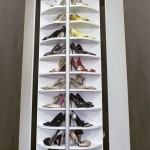Lights Around Mirror: Illuminating Functionality and Style
Bathroom mirrors, once simply reflective surfaces, have evolved into integral design elements, enhancing both functionality and aesthetics. A key contributor to this evolution is the integration of lighting directly around the mirror. This illumination serves a practical purpose, providing focused light for grooming tasks, while also contributing to the overall ambiance of the bathroom.
Several types of mirror lighting exist, each offering distinct advantages. Backlit mirrors, featuring LEDs embedded behind the glass, create a soft, diffused glow, often referred to as a "halo" effect. This type of lighting minimizes shadows and provides even illumination across the face, ideal for applying makeup or shaving. Front-lit mirrors, alternatively, utilize fixtures mounted directly onto the mirror's surface or surrounding frame. These fixtures offer more focused and brighter light, making them suitable for tasks requiring greater precision.
The choice between backlit and front-lit mirrors often depends on individual preferences and bathroom design. Backlit mirrors contribute to a modern, minimalist aesthetic, seamlessly integrating into the overall design. Front-lit options, particularly those with decorative sconces or vanity lights, can add a touch of traditional elegance or contemporary flair, depending on the fixture style.
Beyond these two primary categories, hybrid solutions combine both backlighting and front lighting. This approach offers the benefits of both diffused ambient light and focused task lighting, providing optimal illumination for various activities. Some mirrors even incorporate adjustable lighting features, allowing users to customize the brightness and color temperature to suit their needs and preferences.
When selecting lights around a mirror, several factors warrant consideration. The size of the mirror and the bathroom itself plays a significant role. Larger mirrors may require more powerful lighting to ensure adequate illumination across the entire surface. Smaller bathrooms, conversely, might benefit from less intense lighting to avoid an overly bright or harsh environment. The overall design aesthetic of the bathroom should also inform the choice of lighting. Modern bathrooms often pair well with sleek, minimalist backlit mirrors, while traditional or transitional designs might be complemented by more ornate front-lit fixtures.
The color temperature of the light is another crucial factor. Measured in Kelvins (K), color temperature influences the perceived warmth or coolness of the light. Lower color temperatures (2700K-3000K) create a warm, inviting atmosphere, often preferred for residential bathrooms. Higher color temperatures (5000K-6500K) emit a cooler, brighter light, mimicking natural daylight and often favored for tasks requiring greater visual acuity.
The placement of lights around the mirror is also important for optimal functionality. Ideally, lights should be positioned at eye level or slightly above to minimize shadows on the face. For front-lit mirrors, fixtures should be spaced evenly on either side of the mirror to provide balanced illumination. In the case of backlit mirrors, the diffusion of the light typically ensures even coverage across the entire surface.
Energy efficiency is a growing concern for homeowners, and mirror lighting is no exception. LED lights are the dominant technology in this arena, offering significant energy savings compared to traditional incandescent or halogen bulbs. LEDs also boast a significantly longer lifespan, reducing the frequency of replacements and associated costs.
Installation methods for mirror lighting vary depending on the type of fixture and the mirror itself. Some backlit mirrors are designed for direct wiring into the electrical system, while others may plug into a standard outlet. Front-lit fixtures typically require professional installation to ensure proper wiring and secure mounting. It is essential to consult a qualified electrician for any electrical work to ensure safety and compliance with building codes.
Beyond their functional benefits, lights around a mirror can significantly enhance the aesthetic appeal of a bathroom. They can create a focal point, adding a touch of elegance and sophistication to the space. The interplay of light and reflection can also create a sense of depth and visual interest, making the bathroom appear larger and more inviting. Carefully chosen mirror lighting can elevate a mundane bathroom into a stylish and functional sanctuary.
The market offers a wide array of options, from simple, affordable fixtures to elaborate, high-end designs. Researching different styles, features, and price points is crucial to finding the perfect lighting solution to complement individual needs and design preferences. Considering factors such as lighting type, color temperature, energy efficiency, and installation requirements will ensure a well-informed decision, resulting in a beautifully illuminated and functional bathroom mirror.

The Best Ways To Use Fairy Lights In Every One Of Your Rooms Around Mirror Home Decor

How To Diy Vanity Mirror With Led Strip Lights

How To Put Fairy Lights On Wall Hang Guide

Yansun 5 91 Ft 10 Light Vanity Lights For Mirror White Indoor Led String Usb Hollywood Style H Wl086 The Home Depot

Showroom Mirror With Lights For Makeup Lamps Hollywood Beauty Room Dream Rooms

Exciting Decorating Tips On How To Match Lights With Mirrors

Dreamy Fairy Lights Connecticut In Style Bedroom Mirror Decor Simple Apartments

Hang Lights Up On Your Mirror In Room Hanging Bedroom Outside

Mirror With Lights Around It A Sophisticated Design Marvel

How To Pick A Modern Bathroom Mirror With Lights








